- Submissions

Full Text
Archaeology & Anthropology:Open Access
Neoarchean Granitoids of Bundelkhand Craton, India: Geochemistry and Geodynamic Settings
Sumit Mishra1, Pradip K Singh2*, Vinod K Singh3, Alexander I Slabunov4, HC Nainwal1 and Neeraj Chaudhary3
1 Department of Geology, Hemvati Nandan Bahuguna Garhwal University, India
2 División de Geociencias Aplicadas, Instituto Potosino de Investigación Científica y Tecnológica (IPICYT), Mexico
3 Department of Geology, Institute of Earth Science, Bundelkhand University, India
4 Institutes of Geology, Karelian Research Centre, Russia
*Corresponding author: Pradip K Singh, División de Geociencias Aplicadas, Instituto Potosino de Investigación Científica y Tecnológica (IPICYT), Camino a la Presa,San José 2055, San Luis Potosí, Mexico
Submission: July 02, 2018;Published: October 17, 2018

ISSN: 2577-1949 Volume3 Issue3
Abstract
The orthoclase granite and granodiorite-granite series rocks are extensively exposed in the Bundelkhand granite greenstone belt around Jhansi, Babina and Mauranipur in central part of the craton which are mostly calc-alkaline in nature, low Sr (12-436ppm), low Y (9.1-67) and low Sr/Y (0.24- 21.37) ratio characteristics. These rocks have high Rb (77.7-539), moderate Nb (7.2-42.2) and Nd (21.92-115), and geochemically vary from mostly I- to A-type granites generally formed during syn-to post collision. The chondrite normalized rare earth element distribution pattern is poorly fractionated LaN/LuN=(3.4-31.79) with a negative Europium (Eu) anomaly (Eu/Eu*=0.2-0.82) showing subduction environment. The granodiorite-granite series rocks show mostly volcanic arc setting while orthoclase- granites plots within the syn-collosion to post-collisional granite fields on the Yb+Ta versus Rb and Nb versus Y discrimination diagram. Geochemical characteristics indicate that anhydrous partial melting of the Paleo-Mesoarchean TTG or mafic crustal through subduction setting responsible for formation of these rocks.
Keywords:Neoarchean granitoids; Subduction tectonics; Geodynamics settings; Bundelkhand craton
Introduction
The early earth crust formation still remains immense wide scope for in depth research on the Precambrian crustal growth which evolving a wide range of geological processes including plate tectonics and magmatism [1-4]. Understanding the early earth evolution and its geodynamics is one of most fundamental scientific issues in geology, because the evolutionary trends of the planet earth cannot be resolved without adequate knowledge of Archean period. To understand the tectonic growth of continental crusts in Archean cratons the granites are playing most important role in this context. The Bundelkhand craton is nestled in the northern margins of Peninsular India. The Bundelkhand craton begin with the ~3.5Ga crustal component growth signatures, as preserve in the form of TTG and gneisses rocks [5-7]. The craton mainly constitutes older basement of TTG and mafic gneisses and is associated with migmatites, amphibolites, schist, and supra-crustal belt of meta-sedimentary and meta-volcanics. The ample orthoclase granites and granodiorite-granite series rocks mostly inhabit of the craton and crustal growth takes place during Neoarchean period in multiple phases [7-9]. Recently, Singh & Slabunov [10-13] depict the Greenstone Belts (GB) and establish tectonic evolution of the craton, based on SHRIMP-dating of zircon from the felsic volcanic rocks from the Babina belt. The present paper deal with the geochemistry of granitiods (granodioritegranite series and orthoclase-granite) rocks from mostly central part of the Bundelkhand craton to establish tectonic settings and the continental growth of the craton during Neoarchean period.
Geological Setting
The Bundelkhand craton covers 29,000 square km, lying between 24°11’ to 26°27’ N and 78°10’ to 81°24’ E, represents a semicircular outcrop. The low grade metamorphic rocks of the Bijawar Group (Palaeoproterozoic) to the south, southeast, and Vindhyan Supergroup (Meso-to Neoproterozoic) to the southeast, south, southwest, and west are resting over on Bundelkhand craton [7,14,15]. The major part of the craton comprises the different phases of magmatism, low-grade metamorphism and deformation of Archean TTG-gneissic rocks, mafic dykes and undeformed quartz veins [8,9,16-18]. The doleritic dykes are usually dark grayish green in color and have NNW-SSE to NW-SE trend [14,19]. A general characteristic of highly jointed quartz veins occur mostly about NE- SW to NNE-SSW trend. Singh [20] mapped the older crustal components from the central part of Bundelkhand craton which are scattered in the E-W shear zones of 3-5kms width. The potash-rich granites (~2500Ma) occurring around Babina, Dhaura, and 3km south of Mauranipur regions. The pegmatites veins are also observed at many places. TTG-gneisses are exposed at Babina, Dhaura, Gora and Mauranipur areas (Figure 1).
Figure 1:General geological map of central Bundelkhand craton showing sample locations. Abbreviations: B: Babina; D: Dhala; Dh: Dhaura; G: Gora; J: Jhansi; K: Karera; Kb: Kabrai; M: Mauranipur; Mh: Mahoba; P: Pichhore
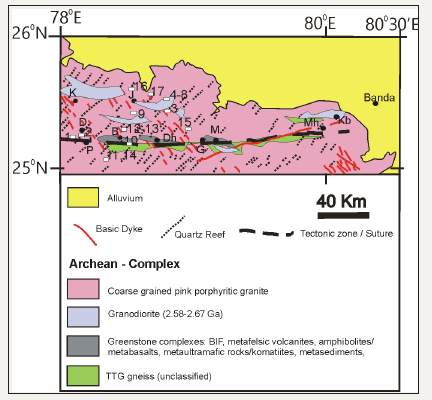
Methodology
Fresh samples of granodiorite-granite series rocks and orthoclase granite, from central Bundelkhand region have been collected and pulverized in agate ball mill for geochemistry. For major element analysis, 1.2g sample powder was weighed and mixed with 6g lithium borate flux (consisting of 35.3% tetraborate and 64.7% metaborate). Further, the fusion bead method was used to prepare the glass bead at 1000 °C for ≈8 min in Pt-Au crucible for only major elements analysis. For selected trace element analysis, 9g of sample powder was pressed into a pellet using 1.2g Wax binding agent. Both, glass bead and pressed pellet analysis were carried out at Institute of Geosciences, University of Campinas (UNICAMP), Brazil for seven samples. Major oxides concentrations were determined by X-ray fluorescence spectrometer (XRF), utilizing fusion beads and trace elements by inductively coupled plasma-mass spectrometry (ICP-MS) using lithium borate fusion techniques. The loss of ignition (LOI) determined by TGA furnace. The base metals were analyzed using four acid digestions method by ICP- atomic emission spectroscopy (ICP-AES). Whereas total carbon and sulfur obtained by Leco combustion techniques. Five samples (SCB-1,SCB-2,SCB-3,SCB-4 and SCB-5) for whole rock geochemical analyses were conducted at Australian Laboratory services Pty. Ltd., Malaga, Western Australia, Australia. Five orthoclase granite samples (BL-5,BL-6,BL-29,BL-30,SB-31) for whole rock geochemistry are analyzed at Petrozavodsk, Russia and detail methodology is given in Singh & Slabunov [12].
Geochemistry and Tectonic Settings
Geochemical compositions of Neoarchean granitoids samples from the Bundelkhand craton were summarized in Table 1 and Table 2. The samples classified by TAS [21] as Dacite (SCB-04,BH- 8,BM-6), Trachyte (SCB-01,SCB-05), Rhyolite (SCB-02,SCB-03,BH- 11,UM-4,BJ-1;PL-1). The majority of orthoclase granite rocks are classified as rhyolite, while granodiorite-granite series rocks fall in dacite and trachydacite field (Figure 2a). The granodioritegranite series rocks are mostly high-K calc-alkaline and orthoclase granites are varies from high-K calc-alkaline to shoshonite series in nature (Figure 2b) [22]. In granodiorite-granite series rocks Na2O varies from 3.29 to 3.83wt% and K2O content varies from 2.44 to 4.04wt.%. The Al2O3 content varies from 12.61 to 15.79wt. % (av. Al2O3: 14.79wt. %) and SiO2 having range from 61.63 to 74.2wt %. The Titania (TiO2) content is low ranging from 0.25 to 1.32 wt.%.
Table 1:Major (wt.%) and trace (ppm) element analytical data of granodiorite (1-6) and granite (7-17) rocks from the central part of the Bundelkhand craton.

Table 2:
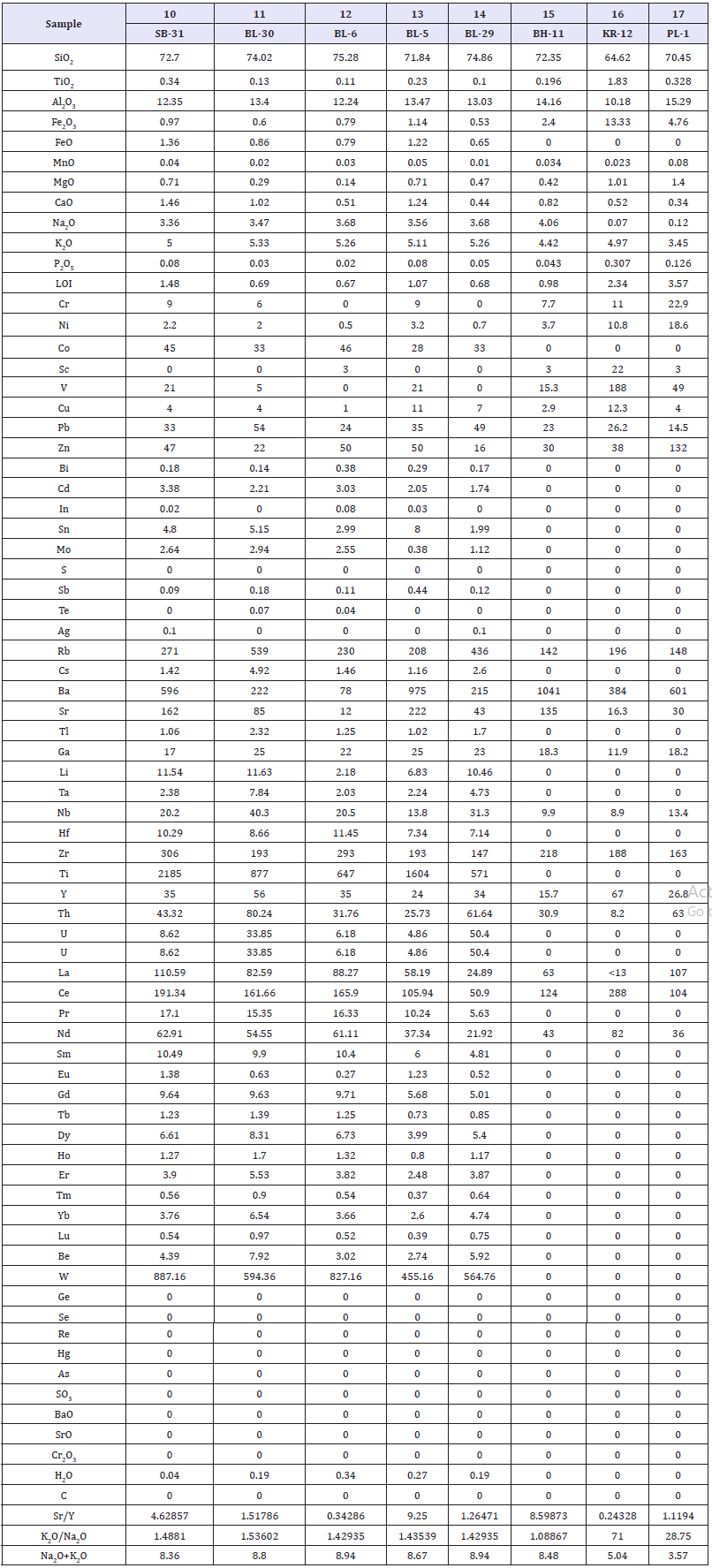
Figure 2:Classification diagram SiO2 vs. Na2O+K2O [21].
Figure 2b: SiO2 vs. K2O diagram [22].

The orthoclase granite rocks having Na2O varies from 3.19 to 4.06wt. % and K2O content varies from 3.45 to 5.42wt %. The Al2O3 content varies 10.18 to 15.18wt. % and SiO2 having range from 64.62 to 75.28wt %. The Titania (TiO2) content are low ranging from 0.1 to 1.83wt. %. Most of the samples from granodioritegranite series rocks are poor in potash (K2O/ Na2O varies from 0.66 to 1.22) while K2O/ Na2O > 1 for orthoclase granite.
The granodiorite-granite series belongs to high-K calc alkaline magma series, with metaluminous character while orthoclase granite shows metaluminous to peraluminous character [23] (Figure 3). These granodiorite-granite series and orthoclase granite rocks mostly occur in I-type to A-type granitoids field of Whalen et al. [24] diagram (Figure 4). On Harker diagram (Figure 5), the abundances of TiO2, Al2O3, MgO, CaO, P2O5, Fe2O3 total and MnO decrease with linear or near-linear trends increasing SiO2 on variation diagrams indicate a typical feature of I-type granites [25]. In the Yb+Ta versus Rb and Nb versus Y discrimination diagram of Pearce et al. [26], the granodiorite-granite series rocks plot within volcanic arc granite field whereas orthoclase granitic rocks plots within the syncollosion to post-collisional granite fields (Figure 6). This is also supported by the R1-R2[R1=4Si4+-11(Na++K+)2(Fe3++Ti4+), molar; R2=6Ca2++2Mg2++Al3+, molar] tectonic discrimination diagram (Figure 7) [27].
Figure 3:A/NK versus A/CNK diagram [23].

Figure 4:Classification of granitoids after Whalen et al. [24].
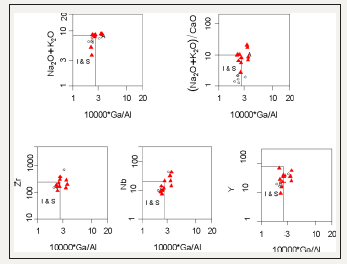
Figure 5:Harker diagrams for granitoid rocks from Bundelkhand craton. Symbols are the same as in Figure 2.
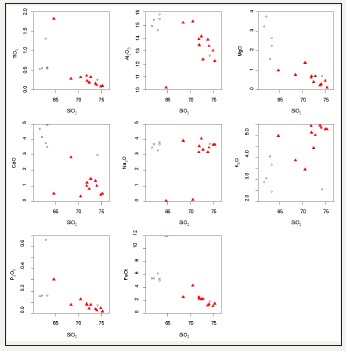
Figure 6:Discrimination diagrams Rb:Y+Nb, Nb:Y [26] for the TTG:gneiss and granite of the central Bundelkhand craton. Symbols are the same as in Figure 2. ORG: Ocean Ridge Granites; syn: COLG: Syn: Collision Granites; VAG: Volcanic Arc Granites; WPG: Within Plate Granites
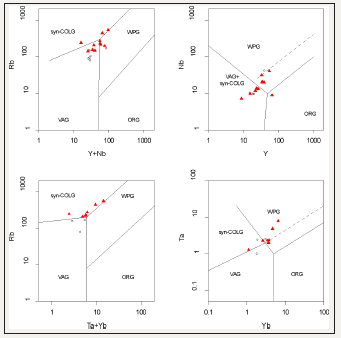
Figure 7:R1:R2 multicationic variation diagram [R1 = 4Si4+:11(Na++K+): (Fe3++Ti4+), molar; R2 = 6Ca2++ 2Mg2+ +Al3+, molar], [27].

Discussion and Conclusion
The granodiorite-granite series samples are classified as dacite to rhyolite composition occur in subduction environment and orthoclase granites formed during syn-collision at shallow depth. The silica percentage ranging from 61-75wt% suggests acidic, calcalkaline nature. It is characterized by low Sr (12-436ppm), low Y (9.1-56) and low Sr/Y (0.34-21.37) ratios. Most of the orthoclase granite samples are rich in potash (K2O/ Na2O>1), with high Rb (77.7-539), moderate Nb (7.2-42.2) and Nd (21.92-115). The chondrite normalized rare earth element distribution pattern is poorly fractionated LaN/LuN=(3.4-31.79) with a negative Europium (Eu) anomaly (Eu/Eu*=0.2-0.82) showing subduction environment (Figure 8a; [10,12,28]). A primitive mantle normalized [29] multi-element diagram (Figure 8b) showed a wide range in the concentration of the trace elements. Most of the samples show enrichment of large-ion lithophile elements (LILE) but depletion of Nb, Ta and Ti [30]. The depletion of Nb and Ta in the rocks is most significant with Nb/La ratios (Figure 8b). It is noted that the granodiorite-granite series and orthoclase granitic rocks are characterized by the Ba-poor, Sr, P, Nb-Ta and Ti anomalies. The negative Nb-Ta anomalies and a positive Pb anomaly are generally interpreted as subduction-related magma generation. Similarly, High-Field-Strength Elements (HFSE) depletions are common in rocks formed in arc environments, those that have interacted with continental crust, or those, which crystallized Ti-rich phases [31].
The Harker diagram of granitoids show positive correlation of K2O vs. SiO2 suggest that K-feldspar fractionation is an important differentiation process during the late stages of crystallization for the orthoclase granite in Bundelkhand craton [15]. Most of the samples are occur in I- to A-type granitic field of the Whalen et al.
[24] diagram which indicates that the granitoids are formed during syn-collision to post-collision tectonic environment. Singh & Singh [15] have established similar observation for the granites and TTG from central part of the Bundelkhand craton. The geochemical analysis suggests a subduction tectonic setting for granodioritegranite series formed in active continental edge where oceanic crust subducted under continental block in Neoarchean time by accretion-collision system. Chauhan et al. [16] also indicate that anhydrous partial melting of the Paleo-Mesoarchean TTG or mafic crustal materials in an extensional regime produce K-rich granites. The plagioclase-orthoclase granite advanced in post-accretionary processes after granodiorite-granite series formed in the craton. The Bundelkhand craton is stabilized at around 2.5Ga.
Figure 8:REE Chondrite spider plot after Nakamura [28].
Figure 8b: Primitive mantle:normalized elements [29] for the Neoarchean granitoids.

Acknowledgement
DST Inspire fellowship (DST/INSPIRE/03/2015/000761) is thanks for financial support to SM. PKS thanks to ALS laboratory, Western Australia for analysis of 5 samples in AAG. VKS is thanks to Department of Science and Technology, Gov. of India for grant (INT/RUS/RFBR/P-279) and AIS is thanked to RFBR for grant (17- 55-45005 IND-а). VKS and SKV thanks to Bundelkhand University, Jhansi, India and IPICYT, Mexico, under MOU for supporting local field mapping.
References
- Chandra R, Singh VK, Sivaji Ch, Piper JDA (2007) Precambrian continental growth and tectonism: Introduction. Gondwana Research 12(3): 199-201.
- Condie KC, Davaille A, Richard C, Aster RC, Arndt N (2015) Upstairsdownstairs: Supercontinents and large igneous provinces, are they related? International Geology Review 57: 1341-1348.
- Singh VK, Chandra R, Basu AR, Verma SP, Biswal TK (2015) Precambrian crustal growth and tectonics: Introduction. International Geology Review 57(11-12): 5-8.
- Slabunov AI, Singh VK (2011) Archaean crustal evolution of the Fennoscandian and Bundelkhand craton: Prospective. In: Singh VK, Chandra R (Eds.), Precambrian Continental Growth and Tectonism, pp. 3-12.
- Kaur P, Zeh A, Chaudhri N, Eliyas N (2016) Unravelling the record of Archaean crustal evolution of the Bundelkhand Craton, northern India using U-b zircon-monazite ages, Lu-Hf isotope systematics, and wholerock geochemistry of granitoids. Precambrian Research 281: 384-413.
- Saha L, Frei D, Gerdes A, Pati JK, Sarkar S, et al. (2016) Crustal geodynamics from the Archaean Bundelkhand Craton, India: constraints from zircon U-Pb-Hf isotope studies. Geological Magazine 153(1): 79-192.
- Sarkar A, Paul DK, Potts PJ (1996) Geochronology and geochemistry of the Mid-Archean, Trondhjemitic gneisses from the Bundelkhand craton, Central India. Recent Researches in Geology 16: 76-92.
- Joshi KB, Bhattacharjee J, Rai G, Halla J, Ahmad T, et al. (2017) The diversification of granitoids and plate tectonic implications at the Archaean-Proterozoic boundary in the Bundelkhand craton, Central India. In: Halla J, Whitehouse MJ, Ahmad T, Bagai Z (Eds) Crust-Mantle Interactions and Granitoid Diversification: Insights from Archaean Cratons. Geological Society, London, Special Publications 449: 123-157.
- Verma SK, Verma SP, Oliveira EP, Singh VK, Moreno JA (2016) LA-SFICP- MS zircon U-Pb geochronology of granitic rocks from the central Bundelkhand greenstone complex, Bundelkhand craton, India. Journal of Asian Earth Sciences 118: 125-137.
- Singh VK, Slabunov A (2016) Two types of Archaean supracrustal belts in the Bundelkhand craton, India: Geology, geochemistry, age and implication for craton crustal evolution. Jounral of the Geol Soc of India 88(5): 539-548.
- Singh VK, Slabunov A (2013) The greenstone belts of the Bundelkhand craton, Central India: New geochronological data and geodynamic setting. In: Singh VK, Chandra R (Eds.), International Association for Gondwana research Conference Series No. 16, 3rd International conference Precambrian Continental Growth and Tectonism, Jhansi, India, pp. 170-171.
- Singh VK, Slabunov A (2015a) The central Bundelkhand Archaean greenstone complex, Bundelkhand craton, central India: geology, composition, and geochronology of supracrustal rocks. International Geology Review 57(11-12): 1349-1364.
- Singh VK, Slabunov A (2015b) Geochemical characteristics of banded iron formation and metavolcanics of Babina greenstone belt of the Bundelkhand Craton, Central India. J Econ Geol Georesource Management 10: 63-74.
- Basu AK (1986) Geology of parts of Bundelkhand granite massif, Central India. Record Geological Survey of India 117: 61-124.
- Singh MM, Singh VK (2011) Geochemistry and tectonic setting of the TTG-gneiss and granite from central part of the Bundelkhand craton, India. In: Singh V K, Chandra R (Eds.), Proceeding of the 2nd International Conference, Precambrian Continental Growth and Tectonism, USA, pp. 95-102.
- Chauhan H, Saikia A, Ahmad T (2018) Episodic crustal growth in the Bundelkhand craton of central India Shield: Constraints from petrogensis of the Tonalite- Trondhjemite-Granodiorite gneisses and K-rich granites of Bundelkhand Tectonic Zone. Journal of Earth System Science 127: 44.
- Malviya VP, Arima M, Pati JK, Kaneko Y (2006) Petrology and geochemistry of metamorphosed basaltic pillow lava and basaltic komatiite in the Mauranipur area: subduction related volcanism in the Archean Bundelkhand craton, Central India. Journal of Mineralogical and Petrological Sciences 101(4): 199-217.
- Mondal MEA, Goswami JN, Deomurari MP, Sharma KK (2002) Ion microprobe 207Pb/206Pb ages of zircon from the Bundelkhand massif, northern India: Implication for crustal evolution of Bundelkhand- Aravalli protocontinent. Precambrian Research 117(1-2): 85-100.
- Sharma KK, Rahman A (2000) The Early Archean-Palaeoproterozoic crustal growth of the Bundelkhand Craton, Northern Indian Shield. In: Dev M (Ed.), Crustal Evolution and Metallogeny in the Northwestern Indian Shield, pp. 51-72.
- Singh MM (2005) Petrology of supracrustal rocks of Bundelkhand massif, Babina-Mauranipur transects, Uttar Pradesh, India.
- Middlemost EAK (1994) Naming materials in the magma igneous system. Earth-Science Review 37(3-4): 215-224.
- Peccerillo A, Taylor SR (1976) Geochemistry of Eocene calc-alkaline volcanic rocks from the Kastamona area, northern Turkey. Contrib Mineral Petrol 58(1): 63-81.
- Shand SJ (1943) Eruptive rocks: Their genesis, composition, classification, and their relation to ore-deposits with a chapter on meteorite, 2nd edition, New York, UK, pp. 1-444.
- Whalen JB, Currie KL, Chappell BW (1987) A-type granites: Geochemical characteristics, discrimination and petrogenesis. Contributions to Mineralogy and Petrology 95(4): 407-419.
- Chappel SW, White AJR (1974) Two contrasting granite types. Pacific Geology 8: 173-174.
- Pearce JA, Harris NBW, Tindle AG (1984) Trace element discrimination diagrams for the tectonic interpretation of granitic rocks. Jour of Petrology 25: 956-983.
- Batchelor RA, Bowden P (1985) Petro genetic interpretation of granitoids rock series using multicationic parameters. Chem Geol 48(1-4): 43-55.
- Nakamura N (1974) Determination of REE, Ba, Fe, Mg, Na and K in carbonaceous and ordinary chondrites. Geochimica et Cosmochimica Acta 38(5): 757-775.
- Sun SS, McDonough WF (1989) Chemical and isotopic systematics of oceanic basalts: Implications for mantle composition and processes. In: Saunders AD, Norry MJ (Eds.), Magmatism in the Ocean Basins: Geological Society of London, Special Publications 42: 313-345.
- McDonough WF, Sun SS (1995) The composition of the Earth. Chemical Geology 120: 223-253.
- Foley SF, Barth MG, Jenner GA (2000) Rutile/melt partition coefficients for trace elements and an assessment of the influence of rutile on the trace element characteristics of subduction zone magmas. Geochimica et Cosmochimica Acta 64(5): 933-938.
© 2018 Pradip K Singh. This is an open access article distributed under the terms of the Creative Commons Attribution License , which permits unrestricted use, distribution, and build upon your work non-commercially.
 a Creative Commons Attribution 4.0 International License. Based on a work at www.crimsonpublishers.com.
Best viewed in
a Creative Commons Attribution 4.0 International License. Based on a work at www.crimsonpublishers.com.
Best viewed in 







.jpg)






























 Editorial Board Registrations
Editorial Board Registrations Submit your Article
Submit your Article Refer a Friend
Refer a Friend Advertise With Us
Advertise With Us
.jpg)






.jpg)














.bmp)
.jpg)
.png)
.jpg)










.jpg)






.png)

.png)



.png)






